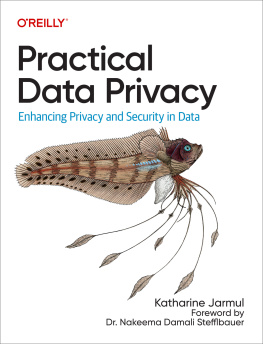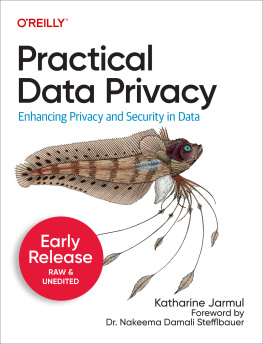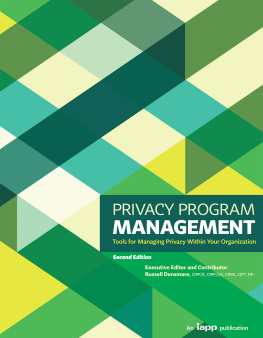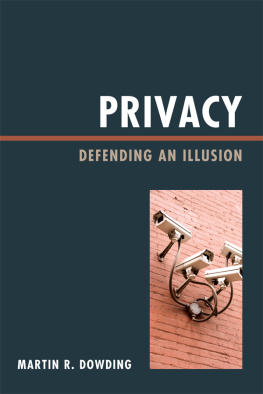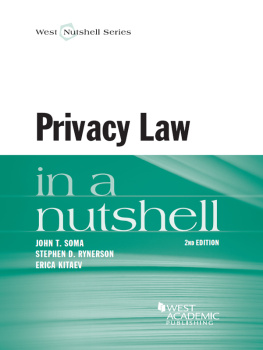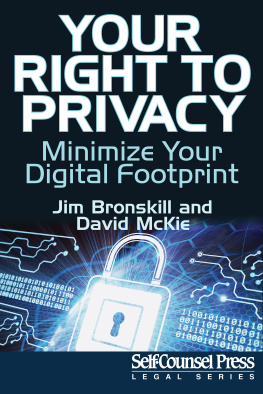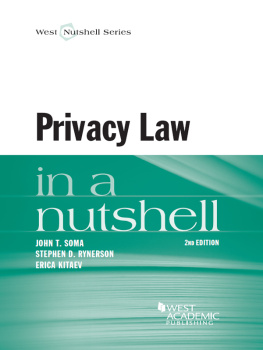Copyright 2020. All rightsreserved. No part of this publication may be used, copied, reproduced,modified, distributed, displayed, stored in a retrieval system, or transmittedin any form by any means (electronic, mechanical, photocopying, recording, orotherwise), without the prior written authorization of the publisher.
Why This Book?
Technologies are increasingly being built withintelligence to make life easier. With these changes, AI built intotechnologies is interfering with the privacy of individuals.
The intention of this book is to help readersdetermine how to navigate a business environment which, in todays andtomorrows economy, has become more digital.
Many organizations are beginning to use newtechnologies like AI, while some have already used it to automate many of theirprocesses. Often, in many sectors, if not all, AI has become crucial forbusinesses to compete and survive, and a firms success increasingly depends onits ability to automate processes. As a result, more and more businesses needto be ready to deploy AI. Because their customers and laws hold themaccountable, this involves securing anchors of trust such as the resilience andintegrity of the AI systems they use, monitoring of their performance, theirrisk, and complying to existing norms and rules. This also involvesestablishing governance frameworks to facilitate the responsible adoption, use,and scaling of AI. For decision-makers within organizations, incorporating thisunderstanding of AI and its applications in their field (or even beyond) andpromoting the adoption of these frameworks is a wise move, even though theyhave taken a non-technological career path. Those who learn how technology isshaping the world will have an important role in society.
Naturally, organizations see AI-based solutionsas an opportunity to increase efficiency, improve productivity, and createstakeholder wealth. Organizations are increasingly subject to rules andresponsibilities to ensure the privacy of individuals. For some, privacy isalso about ethics, but it can refer to many different things. On top of that,learning about AI and privacy comes with many resources, and it is difficultfor business leaders to choose the best learning materials.
The objective of this book is to provideclarity and guidance on how to navigate what is often subject tomisunderstanding. The book also guides organizations through the technologicaland legal complexities that AI and privacy present, by making theimplementation of these concepts relevant to their business priorities. To thisend, the book starts introducing the concepts, available frameworks, andchallenges, before advancing to concrete scenarios, a multidimensionaldecision-making framework, and critical success factors readers could consider.
The book makes the case for the optimistic view thatAI and privacy can coexist.
Who Is This Books Ideal Reader?
Thisbook is dedicated to any curious reader who wants to know more about balancingprivacy and AI and the ways in which they interact. It provides a preview ofavailable frameworks, a proposal on a holistic framework, and critical successfactors. More precisely, we believe business leaders, technology experts,privacy experts, public policy executives, and consultants will find aperspective that isnt confronting privacy and AI but reconciles them. Readerswill also learn about how, in their professional and private lives, they canplay a greater role in informing, communicating, and building up interest inthese issues. The book aims to support decision-makers, by suggesting ideaswhich strike the balance they consider is appropriate between privacy and theuse of the technology.
How Is This Book Best Used?
Before we begin, we would like to suggest threepoints that will greatly increase the value you receive from this material.First and foremost, we recommend that you do not "see" this materialas a book that you will read once and put on a shelf afterwards. We see it moreas a textbook. To begin, read it completely once, then refer back to it todefine or redefine, review, and implement various parts of your implementationplan.
Second, the principles, framework andperspectives explored in the book are not to be viewed as sequentialactivities, but rather as a set of broad actions or focus areas. Any track(s)that can be read independently or which are connected to other parts are indicatedexplicitly. As a rule of thumb, and unless stated otherwise, consider these asbundled actions to be initiated, followed, and executed while consultingmultiple stakeholders.
Third, and we would like to stress thisexplicitly, this book does not provide legal advice, but our personalperspective on AI and privacy for any manager or executive. We expect this toprovide you with some of the knowledge that you need to build and review yourplans, challenge yourself and your colleagues, and complement the knowledge youalready have.
To make it easier for you, each Chapter endswith a Pro-Tip section. These are guidelines that will make yourimplementation quicker and more effective.
We are open to further engagementand interaction with you. We hope that you will enjoy the reading.
Structure of the Book
This book consists of three broad parts.
Part one includes Chapters 1 and 2, and it isall about introducing the topic and setting the stage. We believe this isessential for a quick alignment on common ground and key terms. Of course, youknow that, but it allows us to start our conversation with you.
Part two includes Chapter 3 through to Chapter6, and it is all about providing you with a synopsis on key AI Frameworks thatwe believe are essential to understand and build on the conversations thatfollow in the book.
Part three includes Chapter 7 through Chapter11, and it is our perspective on which principles you need, which perspectivesyou need to consider, how you can approach them in their complexity, and howyou can develop AI and privacy projects while balancing two distinct anddisparate needs in your organization. We believe these will assist you inconsolidating a structured approach, perspective, and a plan to implement.


